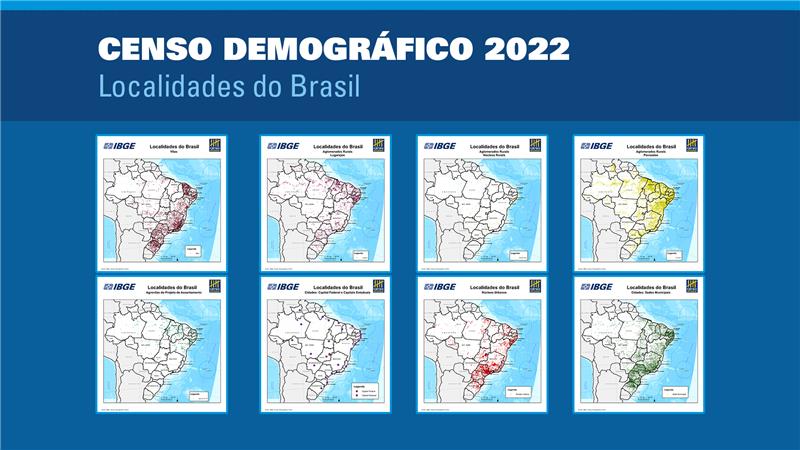Monthy Continuous PNAD
Unemployment rate falls to 6.9% with new record number of persons working
July 31, 2024 09h00 AM | Last Updated: August 02, 2024 02h30 PM

The unemployment rate dropped to 6.9% in the quarter ended in June 2024, the lowest rate for a quarter ended in June since 2014 (6.9%). The data are from the Continuous National Household Sample Survey (Continuous PNAD), released today by the IBGE. As a result, this indicator stays below the half of the highest rate in the time series of the Continuous PNAD (14.9%), registered in the quarter ended in March 2021, during the Convid-19 pandemic.
The unemployed population - those who looked for job - fell to 7.5 million persons, with two-digit reductions in both comparisons of the Continuous PNAD: -12.5% (less 1.1 million persons) in the quarter and -12.8% (less 1.1 million persons) in the year. It was the lowest number of persons looking for a job since the quarter ended in February 2015.
The employed population hit a new record in the time series, reaching 101.8 million. The total number of workers in Brazil grew 1.6% (more 1.6 million persons) in the quarter and 3.0% (more 2.9 million persons) in the year. Again, the number of workers in the private sector (52.2 million) was a record, leveraged by the new records in the contingent of workers with a formal contract (38.4 million) and without a formal contract (13.8 million). On the other hand, the population out of the workforce did not change significantly in no comparison, remaining at 66.7 million.
"The maintenance of positive and successive results has been observed. These records in the employed population were not only leveraged in this quarter, yet they are a consequence of the cumulative effect of an improvement in the labor market in general over the last quarters," highlights Adriana Beringuy, IBGE´s Coordinator of Household Surveys.
The analyst notes that, in the quarterly comparison, the three activities with a rise in employment were Trade, Public administration and the activities of Information and Communication. "These three sectors absorb a huge contingent of workers, basic services and also more specialized services. Therefore, the expansion of jobs in these activities contributes to the increase of compensation and of the employment- population ratio of a number of segments in the labor market," notes Beringuy.
The coordinator reminds that the seasonal behavior of the public sector continues to exert an important role in the rise of jobs. "In the second quarter, the public sector expands mainly leveraged by the segment of Primary education. It is cyclical effect of basic education, with teachers with temporary contracts. Yet, we also had a contribution from the municipal public administration."
Workers´ earnings grow in both comparisons
In the quarter ended in June, the real average earnings of employed persons were R$3,214, a rise of 1.8% in the quarter and of 5.8% in the annual comparison. As a consequence, the wage bill reached R$322.6 billion, a new record in the time series.
The IBGE analyst notes that "the increase in earnings is being leveraged by the expansion in the number of workers in a number of activities, either in the public or private sector. The expansion spread along several economic activities is quite important, as it benefits both high-income workers and those with lower earnings."
Number of discouraged persons is the lowest since 2016
The discouraged population retreated to 3.3 million in the quarter ended in June 2024. It was the lowest contingent since the quarter ended in June 2016 (3.2 million), with drops of 9.6% (less 345 thousand persons) in the quarter and of 11.5% (less 422 thousand persons) in the year. As a result, the percentage of discouraged persons in the workforce or discouraged population (2.9%) was the lowest one since the quarter ended in May 2016 (2.9%).
For the IBGE´s Coordinator of Household Surveys, "the reduction in the discouragement might be related to the improvement in the conditions of the labor market as a whole, allowing this contingent to return to the workforce. And as we are watching a reduction in the unemployed population, the reduction of the discouragement is probably due to the increase in employment."
More about the survey
The Continuous PNAD is the main instrument to monitor workforce in Brazil. The survey sample per quarter corresponds to 211 thousand households surveyed in Brazil. Nearly two thousand interviewers work in the survey in 26 states and in the Federal District, integrated to the data collection network of more than 500 IBGE branches.
Due to the Covid-19 pandemic, the IBGE implemented data collection by telephone on March 17, 2020. In July 2021, face-to-face data collection was resumed. The identity of the interviewers can be confirmed at the Answering the IBGE website or through the Call Center (0800 7218181), and their ID numbers can be requested by the informants.
See PNAD data on Sidra. The next release of the Monthly Continuous PNAD, related to the quarter ended in July, will be on August 30.

















